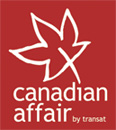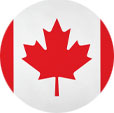If you’ve dreamed of seeing polar bears in the wild, the experience could be closer and easier than you think. You might have imagined that you’d need to travel to the far reaches of Svalbard or Greenland to see polar bears. In fact, the enchanting reaches of arctic Canada are perfect for polar bear watching. Churchill in Manitoba is known as the “Polar Bear Capital of the World”. Perched on the shores of Hudson Bay, it offers easily accessible and reliable bear watching.
We’ve fallen in love with the world’s largest land carnivore (which looks much cuter than its fierce nature would have you believe!) thanks to enduring programmes like Arctic Live, Frozen Planet and Planet Earth. But before you get your very own Arctic experience with Canadian Affair, we’ve got a host of tips and facts to ensure your trip is the once in a lifetime event it should be.
Our essential guide on polar bear watching covers topics such as facts about the animals, the best times to see them, their habits, what weather you can expect and the tours you should head on.
The best polar bear watching tours
Best for the polar bear enthusiast
Churchill Town & Tundra Enthusiast
7 nights, 8 days

The Churchill Town & Tundra Enthusiast tour is perfect for the polar bear enthusiast in your family.
You can stay at the Tundra Lodge, which is aptly located on the vast Arctic tundra just outside of Churchill.
Here you will be able to experience fantastic polar bear viewing from sunrise to sunset and will explore the tundra in specially-designed tundra buggies.
Alternatively, you can immerse yourself amongst these mighty creatures from the observation decks at the lodge.
The tour includes:
- • Two nights in Winnipeg and two nights in Churchill at the lodge
- • Two Arctic crawler expeditions
- • Night time dog mushing experience
- • Hudson Bay Coastal Boat Tour
- • Churchill town and area tour
- • Churchill Itsanitaq Museum visit
Best for all round wildlife
Ultimate Arctic Summer Adventure Holiday
6 nights, 7 days

If you are visiting in the summer then our Ultimate Arctic Summer Adventure Holiday is the perfect fit for wildlife lovers.
This holiday incorporates a Hudson Bay coastal tour by boat to see the polar bears along the coast and in local river estuaries. You will get another chance to see polar bears later in the trip when you get to go on a Tundra Tour.
The fun will continue as you take to the waves again on a three-hour beluga whale boat tour. Beluga whales come in their thousands to the area during the summer months and you can see these ivory-coloured whales from water level without getting wet.
This tour also visits a number of historical sites such as the historic Prince of Wales Fort and the Eskimo Museum.
The tour includes:
- • Hudson Bay Coastal Boat Tour
- • 3 hour Arctic Crawler Tundra Tour
- • 3 hour Beluga Whales boat tour, including Prince of Wales Fort walking tour
- • 3 hour Cultural and Heritage Orientation Tour
- • 4 breakfasts, 1 dinner, 1 lunch
What time of year is best to see polar bears?

Churchill in Canada, also known as the polar bear capital of the world, is one of the few human settlements where polar bears can be seen in the wild and as a result, thousands of outdoor loving, wildlife enthusiasts from across the globe descend on the town.
The best time to see these magnificent animals is in the autumn.
The prime viewing times are in October and November, when the bears descend upon the shores of Hudson Bay to begin their move from their summer habitat on the tundra back to seal-hunting territory on the pack ice.
In late winter or spring you can potentially see female polar bears and their young cubs appear from their dens at the Wapsuk National Park.
If you would prefer a summer holiday in Canada, you can still see polar bears out on the tundra or along coastal rocks during the summer months.
Weather you should expect
Winter

In October and November, which are the best times for you to go polar bear watching, the average temperatures in Northern Canada are very cold.
In October the ClimaTemps website says the average temperature is -1.4 °C, while in November it will drop down to -12.5°C.
What to pack: Lots of layers of clothing, including an insulated parka/waterproof jacket, insulated boots, gloves, woollen hat, snow boots and snow/ski trousers.
Summer
The summer months in Churchill are a lot warmer compared to the winter. June sees an average temperature of 6.1°C, July 11.8°C and 11.3 °C in August.
What to pack: Waterproof jacket, warm layer, hiking boots, shorts, trousers, sun cream, insect repellent and a hat.
Facts about polar bears

- • Polar bears are the planet’s biggest land-based carnivores and are usually 7-8 feet long from head to tail, weighing in at a staggering 410-720kg on average.
- • Polar bears roam the Arctic ice sheets and sit top of the food chain in the region.
- • The bears spend most of their lives around water and ice and as a result are considered marine mammals.
- • They are uniquely suited to life in icy habitats as their fur is thicker than any other bears’ and the thick layer of blubber beneath it provides insolation and buoyancy.
- • Polar bears generally live and hunt alone.
- • These powerful predators main prey are ringed or bearded seals, but are known to eat walrus, bowhead and beluga whale carcasses.
- • The World Conservation Union (IUCN) estimates there are 26,000 polar bears left in the world.
- • Female polar bears usually give birth in winter and their young cubs stay with them for around 28 months.
Habits of polar bears
Polar bears have a number of fascinating habits, which is partly why we love them. Here are some you should know about before your trip.
Communication

Polar bears use body language, scent markings and vocalisation to communicate.
Head wagging from side to side usually means polar bears want to play and nose-to-nose greetings usually occur when a bear asks another bear for food.
Chuffing sounds are a response to stress, sniffing and snorting with a lowered head signify aggression, loud growls are warnings and polar bears charging forward with their heads lowered and ears back is when they attack.
Mating and birthing

Mating often takes place on the sea ice from April until late June and females often give birth to cubs about two months after they enter the maternity den, which is generally in early January.
Cubs drink their mother’s milk for at least 20 months, so the mother’s success at hunting is critical for her cub’s survival.
Hibernating
Something little-known is that with the exception of pregnant females, polar bears do not hibernate and non-pregnant and adult male bears continue to hunt throughout the year.
Pregnant females dig a snow den, usually in snowdrifts along coastal hills near sea ice, to give birth and then emerge three months later. Along the Hudson Bay, mother bears have been known to dig into raised peat soils along the shore.
During this hibernation period the bears live off their fat reserves and then emerge from their den in March or April.
Hunting

As previously mentioned, polar bears’ main prey are ringed and bearded seals and they usually hunt the seals by patiently waiting for them to breathe at openings in the ice.
Seals usually cut 10-15 breathing holes in the ice and they keep these holes open through the winter months. Polar bears use their incredible sense of smell to locate these holes and then lie in wait for the seals to appear.
Polar bears also stalk seals that are basking on the ice, as shown in the below video from BCC One’s The Hunt.
Polar bears have also been seen eating shoulder-to-shoulder at a single walrus or whale carcass. Geese, bird eggs, vegetation and human rubbish are other food sources for polar bears.
Image Credit: Sam Hearne, flickrfavorites, Vladimir Melnik, Ondrej Prosicky, Emma.







